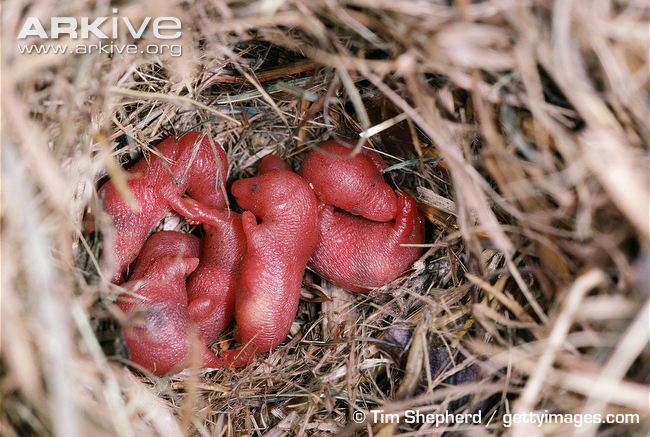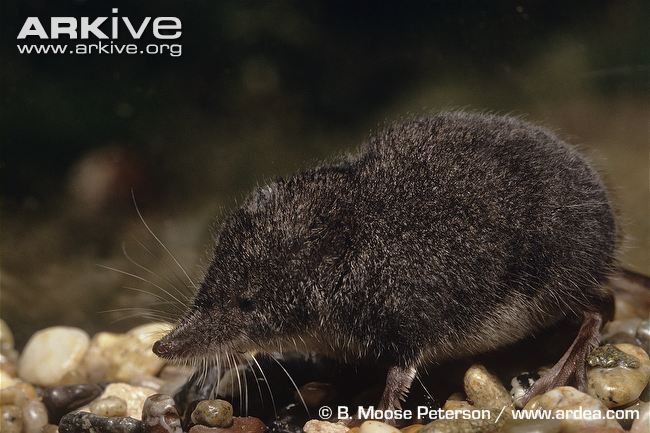Reproduction and Life History
The mating season of Sorex pacificus typically ranges
from March to August, but can occur through November if the
season is particularly mild and food supplies allow (Carraway
1985). Females prepare for the mating season by increasing the
width of their uterine horns starting in January, while males’
testes enlarge in February (Gillihan and Foresman 2004). In
addition, male shrews develop pronounced scent glands on their
rumps that are believed to help draw in potential mates (Schmidt
1994). Falling victim to so many predators means that Pacific
shrews typically have a lifespan of about one year, but it is
possible for them to live and mate for up to two years (Schmidt
1994).
To prevent
competition of food sources, Pacific shrews live solitary lives
which are only interrupted when they come together during the
mating season (Gillihan and Foresman 2004). After mating,
Sorex pacificus has a 21 day gestation period (Schmidt
1994), after which the female will give birth to four young on
average (Carraway 1988). These young are born completely
defenseless, and do not open their eyes until three weeks after
birth. In addition, young shrews drink milk from their mother
until 16-25 days from birth (Gillihan and Foresman 2004).
As mammals,
Pacific shrews take care of their young until they are ready to
lead their own solitary lives. This point of maturation is
generally reached by three months of age (Gillihan and Foresman
2004). One method of protection is the nest built out of various
vegetation and mammalian hair and can incorporate an oval or
domed structure during cold weather (Gillihan and Foresman
2004). Despite the protection provided by the nest, only 55-60%
of young survive to three weeks of age, and even less will reach
maturity and mate (Gillihan and Foresman 2004).
The
relatively low rate of survival for the Pacific shrew forces
them to have up to three litters per year, each with an average
of four individuals (Schmidt 1994). Intense pressure to
reproduce has selected for a short maturation time in Sorex
pacificus, so much so that the individuals born early in
the spring are able to mate within their first year of life, but
breeding typically occurs between two older adults who have
survived winter (Gillihan and Foresman 2004).
Go Home
Move on to Interactions
